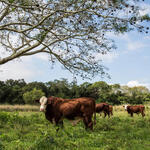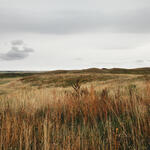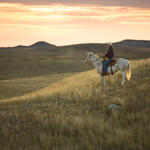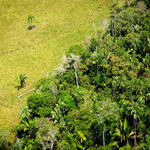- Date: 13 July 2021
- Author: Karla Canavan, VP, Commodity Trade and Finance, Katherine Devine, Director of Business Case Development, WWF
Before net-zero commitments became all the rage, companies were pledging to eliminate deforestation from their supply chains. Deforestation and habitat conversion are powerful contributors to climate change, accounting for about 15% or more of global GHG emissions. Despite increasing numbers of commitments and a decade of effort in some cases, companies have struggled to achieve them. It’s not surprising; there are many complex issues in supply chains that could contribute to deforestation and conversion. These range from multiple direct and indirect suppliers, lack of traceability, lack of government support, fluctuating market forces—such as increasing global demand from China, and more. Nevertheless, addressing the challenge of taking deforestation and conversion out of global supply chains (Deforestation- and Conversion-Free, or DCF) can not wait.
- Date: 22 May 2019
- Author: Nancy Labbe, Manager, Sustainable Ranching Initiative, Ranching and Conservation
America’s beef sector has taken an important step toward greater sustainability. After years of intense collaboration among ranchers, retailers and every other link in the supply chain, the U.S. Roundtable for Sustainable Beef released its sustainability framework—the first time stakeholders across the entire supply chain from ranchers to retailers have agreed to a uniform set of metrics to improve their environmental, social and economic performance.
Representing thousands of ranchers and hundreds of companies, the U.S. Roundtable based its sustainability framework not only on their experience and knowledge but also on a variety of public comments from a diverse range of individuals and interests outside of the sector. The final product provides producers, processors, traders, retailers, restaurants and more with indicators and metrics that they can apply in their day-to-day business to improve air quality, protect waterways from runoff and waste, bolster healthy soils and grasslands, boost wildlife and reduce carbon emissions, among other things.
This is why World Wildlife Fund co-founded the Global Roundtable on Sustainable Beef in 2010 and its U.S. counterpart five years later. We envisioned an industry that thrives economically while promoting better social and environmental outcomes, one that provides nutrition without overdrawing the planet’s natural resources. This sustainability framework is one manifestation of this vision. Across the globe, there are more than 19 similar efforts working toward producing beef more sustainably.
What’s the industry’s next step? Implementation.
Sustainability in the U.S. looks different than it does in other parts of the world. Take Brazil’s Amazon rainforest, for instance. It suffers in part from deforestation to make room for cattle pastures. In the U.S., however, cattle can help save America’s great ecosystem—the Great Plains.
More and more, Great Plains ranchers are finding that what’s good for grass is good for cattle, and vice versa. It makes sense: Grasslands evolved with large herds of grazing animals. Bison historically filled this role and now some ranchers manage cows to mimic bison as they prune the grass, strengthen its roots, aerate the ground and fertilize the soil—all while turning that inedible grass into edible protein. (Chickens and pigs can’t do that.) This action allows the soil to harness carbon, nitrogen and other elements from the atmosphere and turn them into grass. When grasses grow, insect, bird and animal life grows with them. We’re even finding benefits for wildlife on ranches where cattle are grazed with grassland health in mind.
The Roundtable’s framework also provides guidance for auction houses, feedlots, processors, retailers and other supply chain stakeholders to improve in areas such as air quality, carbon emissions, water use, water quality and animal welfare.
It’s good to see industry leaders pushing this grassroots initiative forward; players that have been slow to adopt more sustainable practices are getting left behind. Consumers are demanding food they can feel good about eating and if they can’t buy it, they just simply won’t eat it. This sustainability framework lays the foundation for businesses to act and promote better beef for consumers with a smaller environmental footprint. As the industry now moves to put this framework into action, we’ll continue to work across the supply chain to save our grasslands and support the ranchers who sustain them.
- Date: 15 February 2019
- Author: Laura Nowlin
The following is an excerpt of a story featured in AGDAILY titled "The words of Rural America — we are here!"
I have read several stories recently that make life in rural America seem pretty dismal — the population is aging and decreasing, everyone is poorly educated and addicted to drugs, and the land is either not accessible to the public, or it is being destroyed by crops and cows . I wonder how much time those journalists spent in rural America before they wrote those stories? Any places that matter take a time investment to understand.
Well, I haven’t just visited the “flyover” states, I live here — five generations of my family have lived in the same central Montana county. I can’t speak for all of rural America, but I can speak about this place, and I would like to challenge the stereotype.
My husband and I have two children, and we chose to raise them in rural America. We left good-paying “regular” jobs to live and work in the country. We read a lot of children’s books, and one of our favorites is Horton Hears a Who. I think often of those Whos and how they united to yell as loud as they could, “We are here! We are here! We are here!” for someone to hear them.
There aren’t many of us out here — 500 people in all of Petroleum County. We are spread out, and we work full-time jobs (sometimes several jobs). We are mostly farmers and ranchers, teachers, and local government staff. We are not journalists, marketing directors, or graphic designers — it is hard to gather together to be loud enough to tell our own story. But, we have a story to tell...

...We are passionate about our land. This includes the public land where we graze our cattle and the private land that has sometimes been in families for over 100 years. Most of Petroleum County is grassland or the Missouri River Breaks — land that is not suitable for growing crops, so instead, most of us raise cattle.
The grasslands evolved with grazers. The two are codependent on each other and the grasslands need a large herbivore grazing it just as much as the cattle need the grasslands. When a cow grazes, she chomps off part of the plant, which allows it to regrow. When a plant does not have the opportunity to regrow, it becomes decadent — old growth dies and clogs out any chance for new growth to happen. The wildlife, such as deer and antelope, don’t graze this old, dead grass. Cattle hooves break up plants and create litter that covers the ground — this catches water and helps plants to regrow. And, finally, cows poop and pee — the best form of natural (and free!) fertilization out there. Grazing is part of the whole system that enhances both the soils and everything that is below ground, as well as the grasses and other plants above ground.
Ranchers provide, “ecosystem services.” This means that when we use good land management practices, we provide benefits to the land from which all of society benefits. Healthy grasslands, which can be achieved through cattle grazing, provide ecosystem services like carbon sequestration, water filtration and water storage, open spaces, and wildlife habitat. The beauty of using cattle to graze the grasslands is that they can be managed to address the needs of the land. For example, a noxious weed infestation can be grazed at a certain time of year to get it under control. Where buildup of plant material has happened, grazing that buildup can keep fire danger managed to a more natural level. Studies of grassland songbirds have shown that some of these birds need short grasses, and even prefer bare ground, at certain times of the year. Ranchers can graze their cattle through pastures on a rotation that benefits these declining bird populations.
To read the full story, visit AGDAILY.
- Date: 21 February 2017
- Author: Jason Clay
When a large, global food company commits to deforestation-free commodities, its entire supply chain listens. And when McDonald’s does so, other global food companies follow suit. That’s why the company’s commitment to source only deforestation-free beef by 2020 in regions with identified risks relating to the preservation of forests holds such promise to protect critical habitats, including Latin America’s most valuable ecosystems.
While deforestation has slowed across parts of the Amazon, it remains the world’s largest arc of deforestation. Furthermore, as if to compensate for progress in the Brazilian Amazon, deforestation has intensified in other Amazon regions of countries neighboring Brazil, as well as the Cerrado savannah of Brazil, and the Chaco mixed grass and woodlands of Paraguay and Argentina.
Many factors drive deforestation, but beef production is the biggest. Cattle ranching occupies about 80 percent of the deforested area in the Amazon, and it has led to the conversion of nearly 200 million acres of Cerrado habitat. Between 1976 and 2011, more than 29 million acres of Chaco habitat were converted largely first for the production of beef and then soy, a feed source for livestock.
The environmental impacts of deforestation are clear: it contributes to climate change, drought, soil degradation and erosion, water pollution, the spread of disease, and the loss of biodiversity. There are a number of social impacts as well from land conflicts to bonded and child labor, the displacement of indigenous cultures, and deterioration of water quality for drinking and fish, the most common source of protein in many affected areas.
From multinational traders to smallholder farmers, businesses increasingly recognize the economic risks of deforestation, such as resource scarcity and soil degradation, supply chain instability, legal jeopardy, and reputational harm. Its impact on weather variability is particularly troublesome for Latin American farmers who largely rely on rain as opposed to irrigation. Indeed, research indicates that deforestation has contributed to several “once-in-a-century” droughts and floods in Brazil since 2000.
Global food companies are in a unique position to influence not only their own supply chains but also that of their rivals. McDonald’s need for ground beef from select cuts leaves the majority of each animal for other buyers. In other words, for every pound of deforestation-free beef raised on farms that supply to McDonald’s, several more pounds of food—as well as leather and other byproducts—are destined for other companies’ supply chains, facilitating a sector-wide move to conserve forests.
WWF is working to support the transition to deforestation-free commodities, such as beef, soy, palm oil, timber, and so on. As a founding member of the Global Roundtable for Sustainable Beef, for example, WWF works with producers, other industry players, environmental NGOs, and researchers to push for the adoption of locally appropriate indicators and metrics that help producers reduce the footprint of the beef they produce. In collaboration with National Wildlife Federation, The Nature Conservancy, and the Gordon and Betty Moore Foundation, we are securing commitments from other companies in the beef and soy supply chains to eliminate deforestation in the Amazon, Cerrado, and Chaco ecosystems specifically.
Just as the global, interconnected food system means that environmental and economic impacts can reverberate around the world, so too can positive commitments to protect forests ripple out across the entire industry. As one of the largest single buyers of beef, McDonald’s influences producers, processors, distributors, and other companies at every point along the value chain. Today, it is sending a clear message to all of them: the future of beef is deforestation-free.
- Date: 16 March 2015
On March 3, a group of stakeholders from producers and processers, to retailers and packers, and NGO’s, including World Wildlife Fund, launched the U.S. Roundtable for Sustainable Beef. We sat down with Wayne Fahsholtz, past president and CEO of Padlock Ranch in Wyoming, and founder of AgWin Group, a ranch management consulting service, to talk with him about the role the ranching community plays in the production of sustainable beef.
- Date: 23 October 2014
We recently sat down with Bob Langert, McDonald's vice president of sustainability, to learn more about how environmental stewardship is playing a part in the company's decision making.
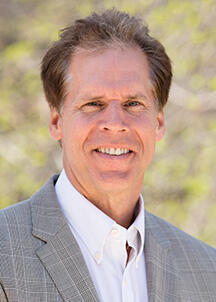
Bob Langert, vice president of sustainability, McDonald's
What does sustainability mean to McDonald’s?
For McDonald’s, sustainability is all about creating shared value – for our business and the world in which we operate. We truly believe that we can grow our business by making a positive difference.
We now have a bold 2020 Framework that is guiding our work, centered on Five Pillars: Food, Sourcing, People, Community and Planet. We’ve developed measurable, forward-looking goals in areas like energy efficiency that prove the linkage between good business and good sustainability. For example, we are aiming to reduce our energy usage in company-owned restaurants by 20% by 2020. It is our #1 environmental impact for both company-owned and franchised restaurant operations, reducing our carbon footprint and our annual energy bill, estimated at over $2 billion.
Sustainability also means living Our Values every day, and making decisions based on these values. Doing the right thing has, and always will be a critical part of who we are as a company.
- Date: 15 May 2013
- Author: Nick Conger
WWF's mission is to conserve nature and reduce the most pressing threats to the diversity of life on Earth.
